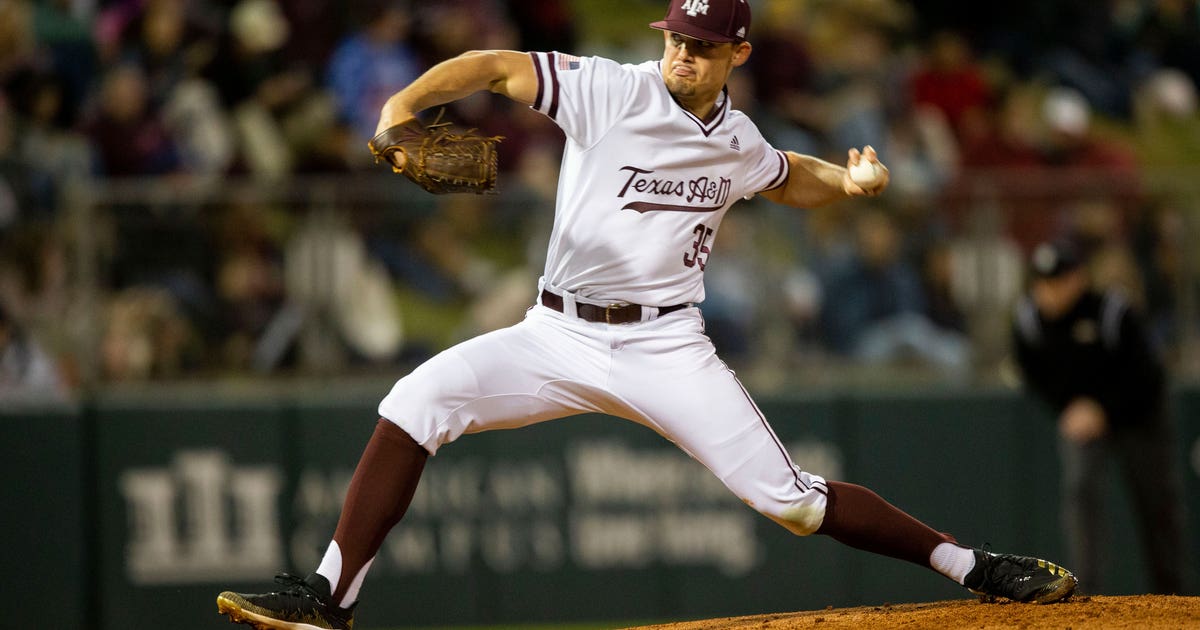Royals’ rebuild continues with influx of top college prospects


KANSAS CITY, Mo. — The Kansas City Royals for years valued high school prospects in the first-year player draft, guys with an abundance of raw athleticism, undeveloped talent and what those in the scouting profession would call “high upside.”
The trouble is such risks often carry even lower floors. They are risky propositions who often fail to pan out.
Whether by circumstance or intention, that approach to the draft has changed dramatically in recent years, and it continued with the Royals scooping up more developed college talent in this week’s draft.
They spent first-round picks on Texas A&M left-hander Asa Lacy and Baylor infielder Nick Loftin, then added Alabama outfielder Tyler Gentry, Oregon State left-hander Christian Chamberlain and Eastern Illinois right-hander Will Klein among their four remaining picks.
“These guys are absolute winners,” Royals general manager Dayton Moore said on a Zoom call with reporters. “They’re articulate. They’re prepared. Speaking to Nick, the only thing he kept talking about was how he was going to win a World Series. This kid is a champion. That’s just a perfect fit for us.”
It certainly is these days.
The Royals actually built the majority of their back-to-back World Series teams of 2014 and ’15 with prep prospects, led by back-to-back first-round selections in Mike Moustakas and Eric Hosmer. The duo helped end nearly three decades of abject failure within the organization and proved that even a small-market franchise can do big things.
But whereas both of them made it to the big leagues in relatively short order, more recent high school prospects — most importantly those taken in the first round — have struggled mightily.
Starting with Foster Griffin and Chase Vallot in 2014, the Royals selected prep prospects with each of five straight top picks. None has reached the majors.
The shift in approach began in 2018, when the Royals realized they needed to restock pitching in the upper levels of their farm system. It happened to coincide with a year in which there was an abundance of college talent and the Royals had two supplemental picks and a compensatory pick, essentially giving them four first-round picks. They took Florida teammates Brady Singer and Jackson Kowar, both right-handed pitchers, then Virginia left-hander Daniel Lynch and Stanford left-hander Kris Bubic. Oh, and in the second round they added Memphis right-hander Jonathan Bowlen for good measure.
In all, the Royals spent their first eight picks on college prospects in 2018, and already they have begun the long climb to the majors in relatively short order. In fact, throw the 21-year-old Lacy into the mix and the Royals envision a starting rotation in a few years that could include pitchers all currently aged 24 or younger.
“Kansas City was the place I wanted to be,” Lacy said, “so it wasn’t a shock to me when I got the phone call. I’m extremely thankful the Royals gave me this opportunity. The guys from the SEC they’ve gotten, including Kris Bubic from Stanford — just a competitive environment I’m going to be in.”
Lacy was widely considered the top pitching prospect in the draft, yet fell to the Royals with the No. 4 overall pick. Loftin has such versatility and approach that the club pondered drafting him with its initial selection.
“We were obviously thrilled that Asa fell to us, or got to us,” Royals scouting director Lonnie Goldberg said. “We have a ton of history and followed this kid a long time, all the way back to his sophomore year on Team USA, and add him to the mix of the team we have already — this kid has a power arm, four plus-pitches and just competes at an incredible level.
“And we were ecstatic to get Nick down at 32,” Goldberg added. “When you talk to the Team USA coaches about that team, this is the kid who they said might have the best makeup.”
Exactly what the immediate future holds for them is anybody’s guess. Major League Baseball and its players association are continuing to haggle over how to have a shortened season, while minor league seasons appear to have been scrapped entirely.
Lacy hopes that a fall league occurs among spring training complexes in Arizona, and that might turn out to be a good thing for the Royals.
Rather than have all those prospects spread among different levels of the minors, they could have them all in one camp, pushing each other toward the day when they step on the field at Kauffman Stadium.
“The important thing about everything we’re doing moving forward,” Moore said, “is just to make sure we keep guys healthy. I’m talking about minor league players. And just prepare them for spring training for 2021. And that doesn’t mean they’re not going to pitch, assuming we have some type of instructional league or fall league. We’ll evaluate it. But they’re going to come in and be assessed and we’ll decide from there.”







